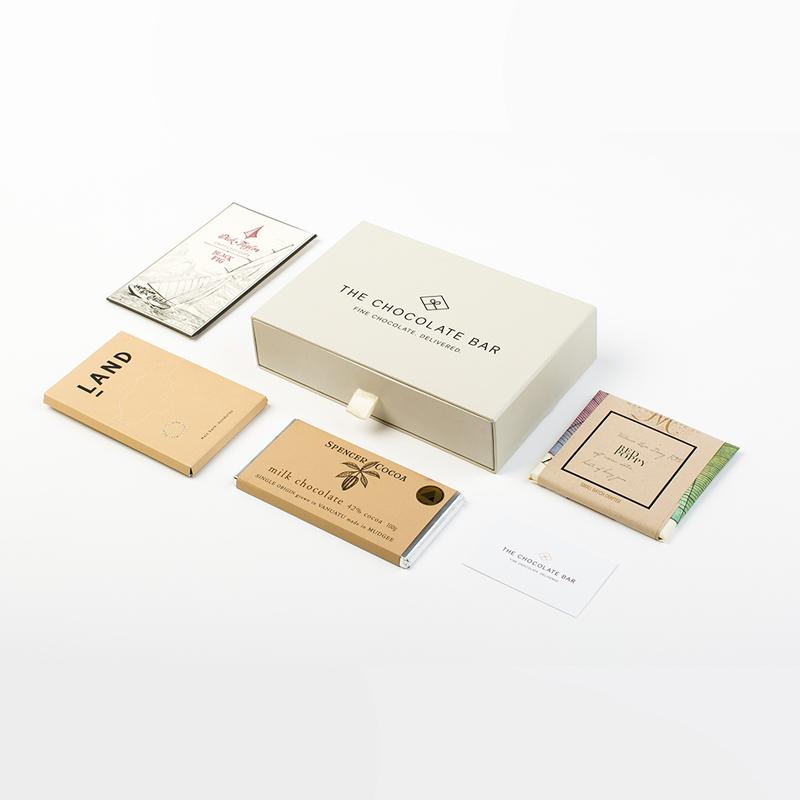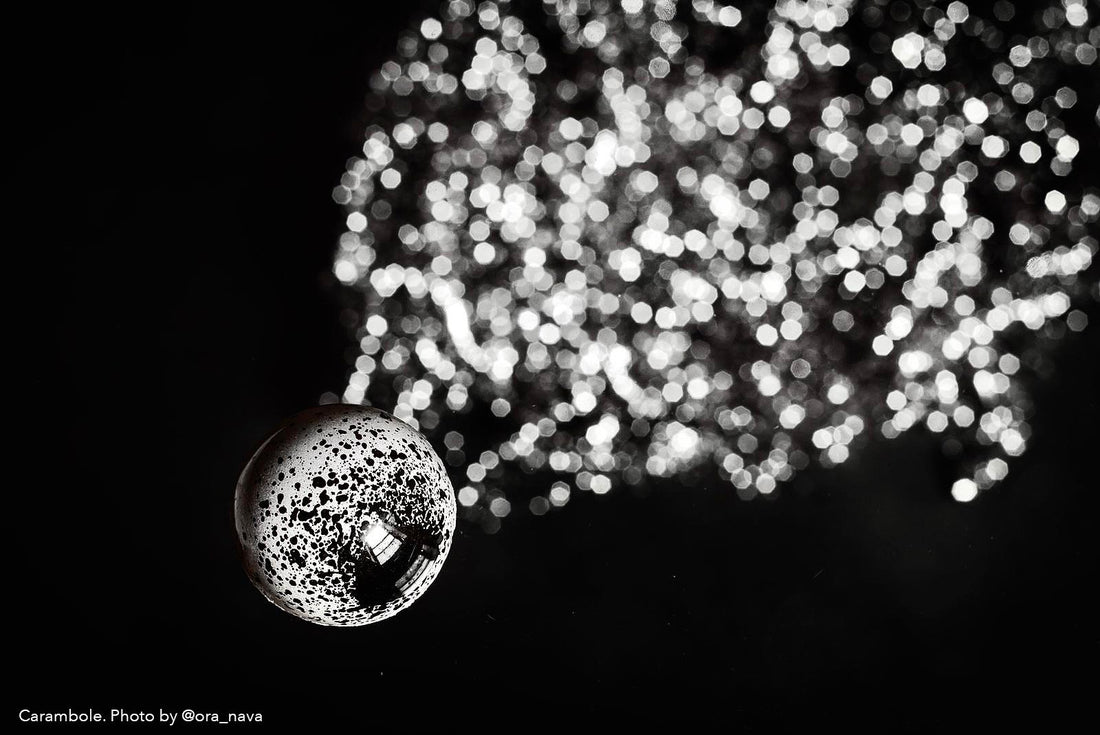There’s never been a more exciting time to be a chocolate lover. Whether you’re a fan of confectionery like bonbons and truffles or more of a bar fanatic, there are more options on offer today than ever before, with new chocolate brands popping up every year, new trends and techniques, new cacao origins, and new flavour experiences that previous generations couldn’t even dream about. It’s truly a delicious time to be alive.
One thing that’s been particularly exciting to see in recent years is the emergence of chocolatiers using bean-to-bar craft chocolate. I decided to take a deep dive into this fascinating new world of collaboration, and to speak with some of the talented individuals who are leading the way...
Before the rise of bean-to-bar craft chocolate, the vast majority of people who wanted to work with chocolate on a small, non-industrialised scale had to work with pre-made couverture, usually made by huge chocolate corporations in Europe or North America. Because this handful of megalith chocolate companies was (and still is) producing most of the world’s chocolate, and doing it whilst sacrificing quality and ethics in order to save time and money, the chocolate landscape that most of us grew up in was homogenised, bland and lacking depth of both culture and flavour. Whilst we loved mainstream chocolate at the time, the emergence of the bean-to-bar craft chocolate scene has opened many of our eyes to the vast world of flavours we’ve been missing out on.
Small-scale bean-to-bar chocolate makers started emerging around the mid-nineties, with the aim of bringing more diversity and quality to chocolate, whilst also improving the ethics of the industry. They rejected the use of mass-produced couverture and decided instead to make their own chocolate from scratch, using all kinds of innovative methods to replicate large-scale chocolate making equipment. They sourced rarer, higher quality beans than what was being used in mass-produced chocolate, and they made cacao the central focus of chocolate again, rather than masking it with large amounts of sugar, milk and unnecessary additives.
Today, there are thousands of bean-to-bar craft chocolate makers all over the world. Whilst it’s still a small segment of the industry, it is growing at a much faster rate than mainstream chocolate, and customers are gaining more and more understanding of the increased level of quality and deliciousness they can find in the craft sector. It’s been amazing to see the growth over the past ten years.

Until a couple of years ago, it felt like small chocolate companies had two main options - make chocolate from scratch, from bean to bar, or be a chocolatier and use mass-produced couverture to create bonbons, truffles, etc. At times there has been a bit of a divide between the two camps, even though both chocolate making and chocolatier-ing are art forms in their own right, and skills that go hand-in-hand with each other. There are a few craft chocolate makers who are making things like bonbons and truffles from the bean (in New Zealand we have Miann and Lucid Chocolatier), but most companies do one thing or the other.
Now that there are so many established bean-to-bar makers, many of them having far outgrown the basements and garages they started out in, there are a lot of options for where to source craft chocolate, and more and more makers who can supply larger quantities. Because of this, an exciting new unity is evolving in the industry, with some of the world’s best chocolatiers using some of the world’s best craft chocolate.
Peter Svenningsen from Nordic Chocolatiers in Denmark works with exceptional craft chocolate from the likes of Friis-Holm, Zart and Duffy’s.
‘Using high end craft chocolate enhances the ingredients that we use. We work with approximately 12-13 different dark chocolates; different ones are used with the different ingredients/flavours. For example, O’Payo from Friis-Holm compliments our Pure Inland Ice piece and the Olive Oil Bergamot, whereas for our Strawberry Gastrique, the dark chocolate from Zart was a better match.’
Peter also spoke about the importance of using high quality chocolate when it is one of only a few ingredients in a bonbon.
‘Working with primarily water ganaches, there is a big focus on the chocolate. One cannot mask bad chocolate when working with max three to four ingredients, and when water is one of them, you have to be picky with the chocolate you choose.’
David Crichton from The Careless Collection was also passionate about the use of craft chocolate in ganaches...
‘The depth of flavour in the final product [of craft chocolate] is so strong that it is very difficult to dilute it. Hence I have found using bean-to-bar to make ganaches a bit of a game-changer. You would think putting bean-to-bar in a ganache would mask the chocolate’s flavour profile, but it transforms it into another dimension. I guess because a ganache is more liquid, the pure taste of the craft chocolate hits the palate before the hard chocolate has a chance to melt properly. So you get a double whammy effect.’
David’s beautiful creations started out as a dessert he created when competing in Master Chef in the UK, but have now gone on to become retail products. He has a big love of Pump Street Chocolate, and uses their couverture for many of his products.
‘I was always aware of Pump Street and loved their chocolate. However, I was tasked with creating a bar based on bread. I discovered the Pump Street Rye Bread chocolate and this proved to be my final eureka moment for my Buttered Toast bar. I sampled most of their couvertures and just knew immediately I needed to build a collection around it.’
Jen Lo from Meltdown Artisan in Sydney has started making her own bean-to-bar chocolate, but she also collaborates with some of the best craft chocolate makers in Australia. Her recent creation ‘Trevor’s Breakfast’ not only credited the chocolate used, but was actually named after the chocolate maker - Trevor Smith from Metiisto Chocolate in Queensland.
‘Funnily enough, it was heavily inspired by Trevor himself. I had been chatting to him about using his Mocha Milk in something, and I was pondering out loud as to what it would be. He jokingly said "breakfast" and I rolled with it.’
Jen also spoke about the ethical benefits of working with small-batch bean-to-bar chocolate...
‘I think the main benefit is obviously choosing to use chocolate that is traceable and sustainably sourced—you know that most bean-to-bar makers are hell bent on ensuring that their practices are sound from the farmer through to the consumer. It's less about making in 'mass' and more about making something unique, of true quality, with their own signature stamp on it. It means that as a chocolatier you're working with something that not many people would necessarily think to use instinctively. So beyond the ethical choices and benefits, it also becomes a positive point of difference.’
Hilary Harvey from Fawkes Confectionery in Oregon is also sourcing bean-to-bar chocolate from a local maker...
‘When I discovered that there was a local bean-to-bar chocolate shop where I live (Seahorse Chocolate in Bend, Oregon) creating small-batch single origin chocolate, I was beyond ecstatic and immediately reached out to see if I could source from them. I'm very fortunate to have their support and their chocolate.’
One thing that all the chocolatiers I spoke with mentioned was the benefit of matching the natural flavour profiles of the chocolate with the added flavour ingredients. Hilary was no exception...
‘Most people think dark chocolate is just dark chocolate. But depending where the cacao is sourced from, and how its roasted and processed, chocolate is comparable to coffee or wine, with all the different flavour profiles and tasting notes. Having the ability to pair bright, citrusy cacao from Trinidad with a tangy lemon ganache, or a warmer, toasty cacao from Vietnam with a cozy cinnamon ganache is a really neat aspect that I love.’
Rita Zamoshina from Carambole in Amsterdam uses couverture from a huge range of the world’s best chocolate makers.
‘It is like an artist's palette to me. I can combine so many interesting flavours in just one bonbon! ... The process of making bonbons turned into a hunt for the flavour for me. Bean-to-bar has way more flavour potential, it has a human story behind it, it is sustainable and I love to tell this to my clients.’
Rita also told me about how much she enjoys building relationships with all the different chocolate makers...
‘To get to know their story, to be able to call and to ask for something customised, to know what new things are coming and will be developed. It is a field for collaboration. Most of the makers are very creative and small-scale, they are really generous and inspired people. New ideas get discovered. You have people in front of you, not corporations and telephone operators. Chocolate unites people of the same passion and soul.’
Speaking of uniting people, Yana Yakhnes from Only Child Chocolate Co. in Portland, Oregon, came up with a really innovative project when the Covid19 pandemic started. The Mixtape Series involved collaborating with four local chocolate makers (Chakralot, Cloudforest, Foxglove and Map Chocolate) to create a chocolate mixtape (literally) and a digital playlist to come with it.
‘When the pandemic started, I thought about how this project would be a great way to collaborate with other people while being apart. Additionally, music is such a great communicator of emotion, especially when you can’t find the right words. I loved the idea of people sitting around the country eating the same chocolate, listening to the same music, and having a guided experience that helped them tap into all their senses (sight, taste, smell, touch, sound). So I took this idea and thought more about how I’d love to work with particular makers to make flavours that matched only their chocolate. Just like a mixtape, it would have the right flow and a particular mood.’
Yana also told me about the vast flavour possibilities with a project like this...
‘Once you taste chocolate that is made by a small-batch maker, one who uses origins they carefully and lovingly coax to tell all of their flavour secrets, you realise that there are a hundred more possibilities to create unique flavour with unique chocolate. It’s like suddenly being able to see in colour, after only seeing in black and white.’
When the pandemic hit, Riadh Aine from Bumble & Oak in Cambridge, UK, also created an opportunity to engage in more collaboration, using chocolate as a bridge to help people connect during lockdown. She’s worked with several different British chocolate makers, including NearyNógs, J. Cocoa, York Cocoa House and Anisa & Chocolate.
‘I’ve proudly roped my close friends into doing collaborations, including subscription boxes during lockdown. [We’ve been] highlighting what they do, the difference between making chocolate and making chocolates, and I feature makers in my tastings. It’s had a knock-on effect of perhaps inspiring other chefs and chocolatiers to consider where they source their chocolate, and following supply chains to their farming origins.’
When talking about the benefits of working with craft chocolate, Riadh talked about the importance of finding suppliers who share her own values...
‘Most, if not ALL craft makers share the same values. Care for their environment, not just their own immediate, but globally. And ALL those I know and work with have an innate understanding of how climate affects everything, from growing season, to disease control, and distribution. A much bigger picture, that includes families supporting families essentially. Sustainable, regenerative farming, supply chains, even distribution of wealth, small business supporting small business, cooperatives and collaboration over competition.’
With all of these benefits to using craft chocolate, you may be wondering why every chocolatier isn’t jumping at the opportunity. The main reason is cost - as you would expect, small-batch bean-to-bar chocolate costs a lot more than mass-produced couverture. But for higher-end chocolatiers it is undoubtedly possible to make it work financially, and with a more delicious end product, customers are willing to pay more. This can actually result in a chocolatier making more money for the same amount of work and time, so I think fears about using a more expensive chocolate can sometimes be misguided.
The other difficulty with using craft chocolate is its technical complexity. Jen Lo told me that ‘It's almost like learning to re-temper chocolate when you start working with craft. In principle it's technically exactly the same, but with a lot of craft chocolate there is either no or very little cocoa butter in the mix—it makes it a lot more viscous and trickier to work with in terms of timing, especially when trying to do things like enrobing or moulding things like bonbons.’
Johnty Tatham of Lucid Chocolatier is both a chocolatier and a bean-to-bar chocolate maker, and when I interviewed him last year he had this to say about the technical aspect of making bonbons with craft chocolate…
‘Fluidity is paramount for the chocolatier, as often the flavour of the chocolate being used isn’t the star of the show, however workability is. A classic example of this is a bonbon. We want the shell of the bonbon to be as thin as possible so that when we eat it, the shell cracks and the inside flavour bursts out onto the palate as the chocolate melts away nicely on the finish. If we were using thick, two ingredient bean-to-bar chocolate for this, we simply wouldn’t be able to achieve a technically exemplary bonbon. However if we use a chocolatier-specific chocolate, we are able to achieve extremely thin shells, and the beautifully formulated filling will shine through, reflecting the skill of the chocolatier.
Chocolate makers on the other hand, particularly two ingredient [cacao and sugar] makers, generally won’t prioritise the additional fluidity and melt in the mouth components of additional cocoa butter or lecithin, instead opting for potency, viscosity and originality of flavour. This is great for eating chocolate, as we are able to capture the true flavour of origin without offsetting it with cocoa butter. However, if we want to then take this chocolate and make a bonbon or a hand-dipped caramel with it, I can see many chocolatiers, including myself, pulling their hair out at the thought of it.’
Hilary Harvey also spoke about this technical aspect...
‘The thing that most people like about mainstream chocolate is that it's always the same, and from a production standpoint, reliability is key. But when you work with a smaller scale, bean-to-bar producer things can vary from batch to batch. You notice the nuances more. Which can be both bad and good, but I quite like it. To me, it's like getting a hand painted gift from a friend instead of a mass produced print from an online store. It's not going to be identical or perfect, but that kind of makes the end product even better.’
Here in New Zealand there have been a couple of brief collaborations between chocolatiers and craft chocolate makers in the past, but currently there are none happening. I would love to see more of these partnerships forming, which is partly why I’ve written this article. It can be so disappointing when you taste a beautifully crafted bonbon that’s been made with average, mass-produced chocolate, and often I find this does a disservice to the talent of the chocolatier. Tasting bean-to-bonbons made by Lucid Chocolatier and Miann made me realise the full flavour potential of this style of confectionery. It can be a financial, technical and logistical challenge for chocolatiers to start using craft chocolate, but it can undoubtedly result in a superior product, both in terms of flavour and ethics. It also has the potential to strengthen personal connections amongst chocolate professionals from all areas of the industry, and to build an enduring sense of community that includes cacao growers, chocolate makers, chocolatiers, consumers, and everyone in between. In a world that can often feel fractured and divided, that unity feels more vital now than ever before.
Thank you so much to everybody who took the time to answer my questions, as well as providing the beautiful images.













1 comment
Wonderful and inspiring article! Thank you